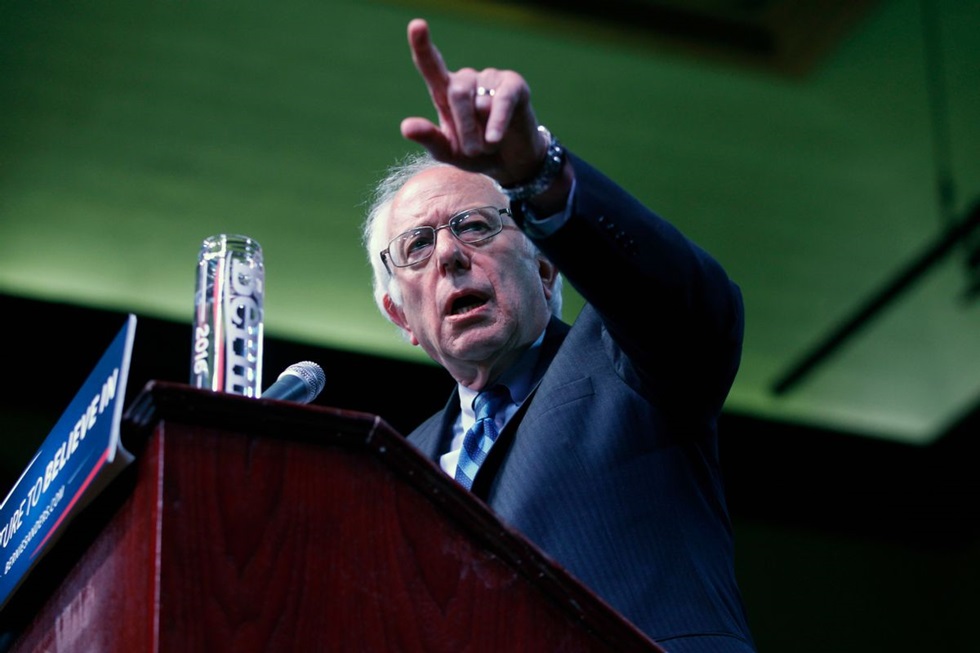
WASHINGTON—In a note of statistical good news for U.S. workers, the Census Bureau reported that last year, the median income for all U.S. full-time workers finally surpassed the high it reached just before the coronavirus-caused shutdowns trashed much of the U.S. economy five years ago. It rose 4 percent last year but the inflation rate matched the income increases, also coming in at 4 percent.
Inflation, of course, was an issue Trump used against Vice President Harris in the debate last night. He did not say, however, that collusion and price gouging by corporations was behind much of the so-called “inflation.” Unfortunately, Harris did not really show in her rebuttals how corporate price fixing was to blame for so many of the price hikes consumers are facing.
The inflation rate was cut almost in half between 2022 and 2023. It was 7.8 percent two years ago, the Census said. With prices fixed by corporations remaining at high levels, however, consumers are not feeling benefits from the lower inflation rate.
According to the Census income inequality, while still wide, shrank a little. The ultra-rich top tenth saw their median income increase by 4.8 percent while the median for the poorest tenth rose by 6.7 percent. The poor, however, are not celebrating that too much since it still leaves so many in poverty. The rest of the nation fell between those two figures.
Sen. Bernie Sanders, Ind-Vt., who has championed workers, and slammed the rich, for decades, said in a video the same day the numbers haven’t really changed.
“We have more income and wealth inequality than has ever existed in the history of the United States,” he declared. “The billionaire class is doing phenomenally well. Sixty percent of Americans live paycheck to paycheck and the gap between the rich and the poor is growing wider and wider.
“We’ve gotta take on the greed of the billionaire class and say ‘Yes, you know what, guys? When we’ve got 600,000 people sleeping out on the streets, when people can’t afford to send their kids to college, you know what? You’re gonna start paying your fair share of taxes.’
“Dealing with the massive level of income and wealth inequality is exactly what we’ve got to do.”
The approach put forward by Sanders was, unfortunately, not the way Harris framed the issue of wealth inequality during the debate yesterday.
The Census reported an official poverty rate of one in every nine Americans, or 36.8 million people, last year. That includes one of every five Spanish speakers and 15.3% of all kids.
But a separate “supplemental” census figure, adding in benefits such as food stamps, Medicaid, and housing vouchers, but subtracting medical care costs, housing, and transportation, put the overall poverty rate at one in eight, not one in nine.
The poverty numbers are a far cry from the figures the Poor People’s Campaign cites. However, its co-chair, the Rev. William Barber II, always carefully points out that their data from a comprehensive survey—pre-coronavirus—includes not just the poor but low-wealth people, too.
Low-wealth people are people, 66 million of whom are white, who lack home equity, savings, or both, to sustain themselves should an emergency or a disaster—everything from an auto crash to a hurricane–hit. They’d be wiped out financially.
Data backs Sanders
The data backed Sanders’ point about the ultra-rich. The census reported the wealthiest fifth of the country still garnered just over half of all income in both years. There was a slight decline in their income share, but the census experts called it “not statistically significant.”
The decades-old racial income gap persisted, showing the goal of Dr. Martin Luther King’s famous March on Washington for jobs and justice is not fulfilled. The gender income gap widened, too.
Real median household incomes increased by 5.4 percent for white households and 5.7% for non-Hispanic white households between 2022 and 2023. But Black households had a median gain of half of that for non-Hispanic whites. Latino households gained only 0.4% and Asian household incomes slid 0.2%.
Fulltime working women also saw median income decline, the Census figures showed. Last year, the full-time working woman earned 82.7 cents for every dollar the median man made. The year before, the median pay for a full-time working woman was 84 cents per working man’s dollar. The median is the point where half the group is above the figure and half is below.
The Census Bureau experts listed several reasons for that decline. One was that proportionally more working women lost their jobs when the coronavirus plague hit and thus more came back into the workforce. Another was those prior jobs had lower pay and so do their current jobs.
Returning woman workers were joined by an increasing share of young working women, who start out below their male counterparts, even at the bottom of the income scale, the analysts noted.
“The worsening gender wage gap is a national disgrace and further evidence market forces are not enough to solve for gender inequity and women continue to get left behind, even in a strong economy,” said Dr. Jamila Taylor, CEO of the Institute for Women’s Policy Research, in a statement.
“As a single working mom, I know firsthand the challenges women face in the workforce—lack of child care, outright discrimination, racial bias, low wages—and I know how this affects our health and well-being and family’s financial security, as women’s wages often form the backbone of household earnings.
“We cannot ask women in this country to endure these injustices decade after decade while offering only empty promises. Accelerating the pace of change on this fundamental issue should be a top priority for all policymakers and candidates for office.”
Whether the Census Bureau’s positive numbers translate to people on the street is another matter. Public opinion surveys show voters name inflation as the top problem when given a list of choices rather than voluntarily telling poll takers what they believe the top issue is.
The numbers, released fewer than two months before the November election, are sure to be a talking point by both presidential nominees, Democratic Vice President Kamala Harris and Republican convicted felon Donald Trump, the preceding president before Harris’s boss, Joe Biden.
After all, Trump’s rampant denial and mismanagement of the federal response to the coronavirus pandemic led to the first and only overall job decline in a presidential term since the Great Depression under Herbert Hoover. Trump’s top aides and appointees treated the modern-day plague as a PR problem, to be solved by Trump aides consulting with corporate lobbyists and, Trump told sufferers, by drinking bleach to kill the virus in their lungs. He also railed against wearing masks.
Trump keeps lying
Trump keeps lying about his “great economy,” and his followers drink that poisoned Kool-Aid. It’s particularly poisoned because the coronavirus skewed the numbers from five years ago. That made Trump’s “record” better than it actually was.
“For 2019, responses were collected just as the pandemic hit in early 2020,” Economic Policy Institute analysts Elise Gould and Josh Bivens said. “Pandemic disruptions introduced significant ‘nonresponse bias’—meaning it was harder to talk to households to collect the data, and the households who were harder to reach were disproportionately lower income.”
As a result, Trump’s 2019 income “peak” was 2.8% too high, census experts later announced.
The Census Bureau notes there is still persistent poverty—one of every nine people, using the official poverty line for a family of four–and higher than that for children. The proportion of children in poverty increased to one of every seven. The Letter Carriers report similar figures for food insecurity when they conduct their annual national food drive every Mother’s Day.
While the report had national figures for incomes, poverty, and healthcare coverage, it had no state-by-state breakdowns. Those will be in the bureau’s American Community Survey on September 16.
Thus, while a record low of one of every 12 Americans did not have some form of health insurance coverage—private insurance, Medicare, Medicaid, or veterans benefits— at any time last year, there’s no 2023 data on whether “red states” have much larger shares of people without health care coverage.
Community survey data from prior years shows they do. Especially Texas.
Eight percent of all Americans lacked health care coverage in all of last year, the same as in 2022. And 8.6% lacked health care coverage in 2021. But one of every six Texans, 16.6%, lacked health care coverage in 2022 and 18.6%–one of every 5.4—lacked it the year before that.
Like Texas, all but one of the next 20 lowest states in health care coverage in both of those prior years were deep-red. Nevada was the exception. Half of that group had more than one in ten of their residents without any health care coverage in both years. Georgia led that group in 2022 (12.8%).
And the Census Bureau noted though the Obama-era Affordable Care Act sharply cut the number of uninsured, and their percentage of the total population, medical debt pushed an estimated 7.4 million people into poverty last year.
National Nurses United and other backers of single-payer government-run Medicare For All point out that universal federally run health coverage would wipe all those problems out by eliminating the co-pays, high health care premiums, and huge deductibles the for-profit insurance industry imposes on patients, practitioners, hospitals and clinics. Not to mention workers having to sacrifice raises, too.
“We need a single-payer, national health care system which guarantees care for all regardless of their ability to pay. Expanded and improved Medicare for all means everybody in, nobody out,” NNU declares.
We hope you appreciated this article. At People’s World, we believe news and information should be free and accessible to all, but we need your help. Our journalism is free of corporate influence and paywalls because we are totally reader-supported. Only you, our readers and supporters, make this possible. If you enjoy reading People’s World and the stories we bring you, please support our work by donating or becoming a monthly sustainer today. Thank you!











